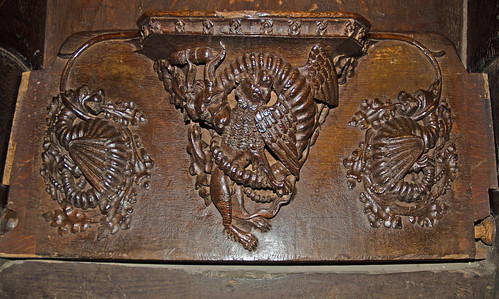Lincolnshire’s First Dragons by Jim Snee
A while ago, I was reading an old history of Lincolnshire as part of my research for Layers of History and the esteemed author asserted that there were no traditions of dragons in Lincolnshire. As a proud Lincolnshire man, I can hardly let that pass!
 First and foremost, Heritage Lincolnshire has its own 21st Century tradition of a dragon egg hunt at Bolingbroke Castle every Easter, which has been established for some years now and will be continuing into the future if the Heritage Lincolnshire staff have any say in the matter.
First and foremost, Heritage Lincolnshire has its own 21st Century tradition of a dragon egg hunt at Bolingbroke Castle every Easter, which has been established for some years now and will be continuing into the future if the Heritage Lincolnshire staff have any say in the matter.
Another recent evocation of dragon lore is the naming of the hamlet at Dragonby in the early 20th Century after a curious serpentine rocky outcrop that occurs close by. Legend has it that this was a living dragon turned to stone before the Romans came to England.
An earlier documentation of dragon folklore or folk art comes from the 18th Century account of the Revesby morris, which describes a “Wyrm” that “snaps” at guests. This is very similar to the Norwich Dragon that snatches gentlemen’s hats and holds them to ransom.
In a painting from the early 17th Century, now in church of St Peter and St Paul at Bratoft, the Spanish Armada is shown in the form of a coiled fire breathing red dragon, an allegory for the evil might of the Spanish Empire.
Medieval dragons are known from around the County’s churches, including misericords (carved supports for choristers and clergymen) in Lincoln Cathedral, Grotesques and Gargoyles at St Bartholomew’s in Appleby and graffiti on the porch of St James church in Aslackby (“although they could be some sort of large wading bird…”). From this we can see that dragons were very much alive and well in the imaginations of our medieval ancestors. It is also worth mentioning that England’s most famous dragon slayer, Saint George, rises to national prominence during this period.
During the dark ages, we have two cultures that are particularly associated with dragons. Saxon and Viking art is full of sinuous intertwined beasts that are often called dragons or wyrms. It is from this era that two more famous dragon slayers come. Beowulf and Siegfried are found in epic Germanic poetry and their exploits contain the slaying of dragons. The story of Siegfried also tells us about the way in which people looked to take on the attributes of the dragon. I have fond memories of a story telling afternoon in a museum where I tied the story of Siegfried bathing in the dragons’ blood to the dragon-headed crest on the Sutton Hoo helmet.
Interestingly we have, from the Anglo-Saxon chronicles, our earliest historical reference to sightings of dragons. It is recorded on a number of occasions that dragons are sighted in the skies above northern England, and this is used as a portent of great woes to come. It is tempting to dismiss such passages as simply monastic moralising, but over the years a number of other rational explanations have been suggested such as comets and meteorites. In recent years, reconstructions of past climates have raised another interesting explanation. Under certain climatic conditions, the phenomenon known as the Aurora Borealis can extend considerably further south than normal. It is possible that what was reported in the Anglo-Saxon chronicles were the writhing forms of the northern lights, which some historians believe to be the origin of all European dragon myths. If this is so, then the first dragons in Lincolnshire were the many coloured dragons of the Aurora, not just in historical times, but going back as far as there have been people in Lincolnshire who, on the right night with the right conditions, looked up and saw something truly magical.
Despite several attempts, I have not yet seen these particular dragons, but one day in the cold north lands I will. It’s a dream I have.
